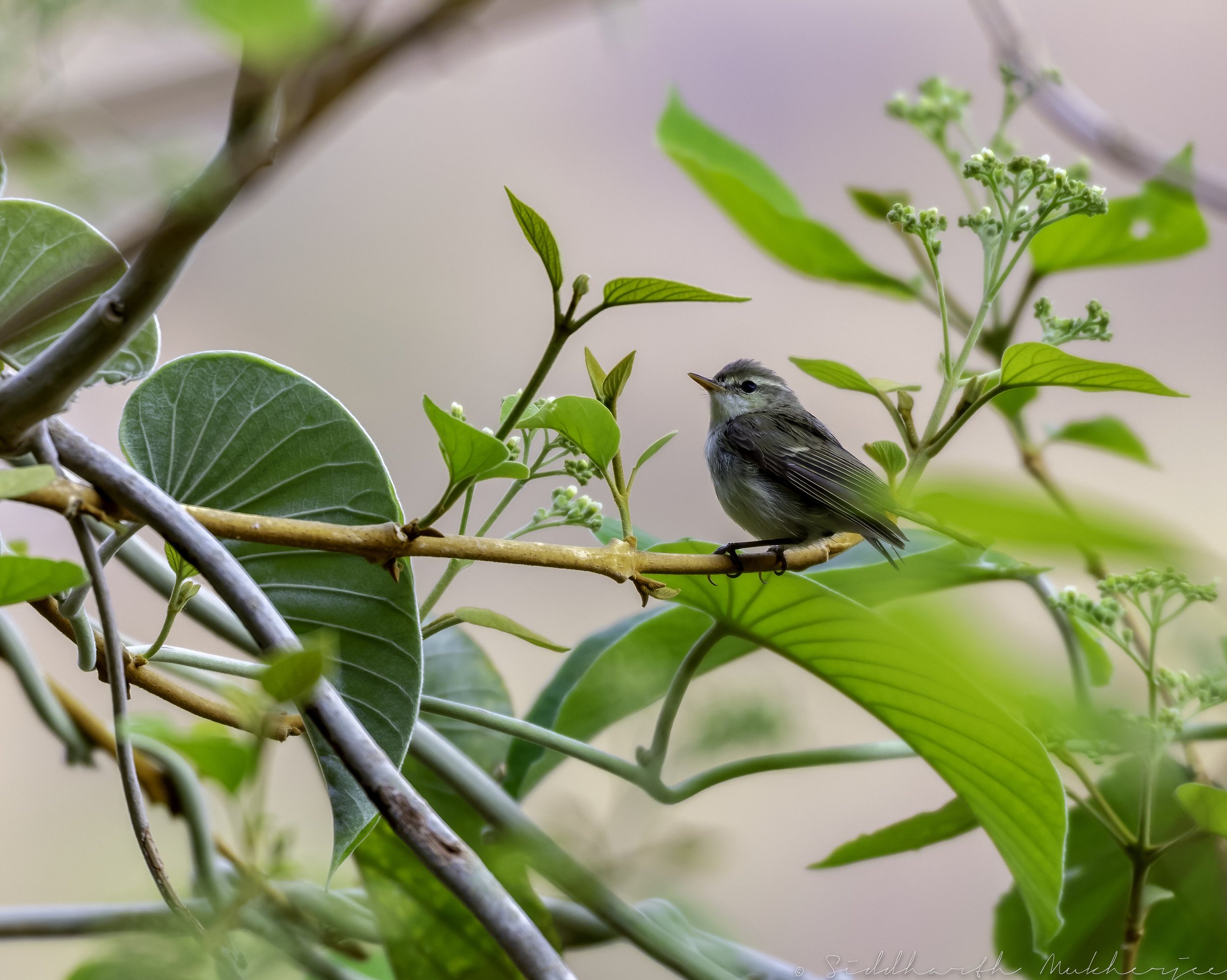Indian Scops Owl
The Indian Scops Owl is a nocturnal bird that is rarely seen during the daytime. It has prominent ear tufts and dark eyes. The coloration is variable, ranging from gray to brown, but dark eyes, thin black border around the facial disc, and lightly streaked underparts remain constant. It inhabits forests, forest edges, parks, and gardens from lowlands up into foothill and montane regions.
#wildartworks, #wildlifephotography, #penchnationalpark, #pench, #Turia, #canon, #seoni, #jungle, #forest, #wildlife, #tadoba, #tipeshwar, #conservationphotography, #indian_wildlifes, #indianwildlifeofficial, #wildlifeonearth, #bbcearth, #natgeowild, #natgeoindia, @awpc.hk, @globalcapture, #madhyapradesh, #trackingwildlife, #owl, #indianscopsowl, #scopsowl, #raptor
Grey-backed Shrike
The grey-backed shrike (Lanius tephronotus) is a species of bird in the family Laniidae. It is found in Bangladesh, India (Uttarakhand), Nepal, Bhutan, China and Yunnan.
Among the shrikes, they breed at the highest altitude. They are partial migrants, with some populations moving south in winter. They breed in summer from late May to early July. The nest is built in a bush and about 3 to 5 eggs are laid. The eggs are incubated by the female alone and incubation is begun even before the complete clutch is laid. The chicks hatch after 15–18 days and are taken care of by both the parents until the fledge after about two weeks.
#wildartworks, #Canon, #Bird, #Birdinginthewild, #BirdWatching, #Wildlife, #WildBirds, #naturephotography, #your_best_birds, #planetbirds, #earthcapture, #photo_pond, #earthpix, #naturyst, #conservationphotography, #yesbbcearth, #wildlifeonearth, #bbcearth, #natgeowild, #natgeoindia, @awpc.hk, @globalcapture, #thailand, #greybackedshrike, #shrike, #chiangmai, #fang, #doisanju, #doiluang,
Greenish Warbler
The greenish warbler is a typical leaf warbler in appearance, grayish-green above and off-white below. Breeding in lowland deciduous or mixed forest it is green on the back and pale below and has a strong white eyebrow which is broad behind the eye and goes all the way to the forehead. There is usually one broad pale wingbar. The bird can be very unobtrusive and difficult to spot.
#wildartworks, #birdinginthewild, #birdphotography, #canon, #CanonWildlife, #BirdWatching, #WildBirds, #naturephotography, #your_best_birds, #planetbirds, #earthcapture, #bbcearth, #photo_pond, #earthpix, #naturyst, @bbcearth, @wild.planet, @wildlifeonearth, @earthpix, #best_birds_planet, @discovery, #wildbirdtrust, #natgeowild, @awpc.hk, #india, #TelanganaBirds, #umamaheshwaram, #achampet, #greenishwarbler, #warbler, #newworldwarbler
Large-tailed Nightjar
The Large-tailed Nightjar is an intricately patterned nocturnal bird, usually found roosting on the ground or a low branch in open forest, secondary growth, and cultivated areas. Brownish gray overall, with a rich brown ear patch and chestnut-and-black dappled wings and exposing bright white tail corners when flushed. Sometimes found in parks and gardens, where it hawks for insects below street lamps.
#wildartworks, #Canon, #Bird, #Birdinginthewild, #BirdWatching, #nightphotography, #WildBirds, #naturephotography, #your_best_birds, #planetbirds, #earthcapture, #photo_pond, #earthpix, #naturyst, #conservationphotography, #yesbbcearth, #indian_wildlifes, #indianwildlifeofficial, #wildlifeonearth, #bbcearth, #natgeowild, #natgeoindia, @awpc.hk, @globalcapture, #TadobaNationalPark, #nightjar, #largetailednightjar,
Blue-fronted Redstart
The unmistakable Blue-fronted Redstart (Phoenicurus frontalis) is a species of bird in the family Muscicapidae, the Old World Flycatchers. It breeds in central China and the Himalayas (where it winters in the southern foothills, as well as in Yunnan, Northeast India and northern Southeast Asia). Its natural habitat is temperate forests. It is also known as the Chinese blue-fronted redstart and Blue-breasted Redstart
#wildartworks, #Canon, #Bird, #Birdinginthewild, #BirdWatching, #Wildlife, #WildBirds, #naturephotography, #your_best_birds, #planetbirds, #earthcapture, #photo_pond, #earthpix, #naturyst, #conservationphotography, #yesbbcearth, #indian_wildlifes, #indianwildlifeofficial, #wildlifeonearth, #bbcearth, #natgeowild, #natgeoindia, @awpc.hk, @globalcapture, #singalilanationalpark, #redstart, #Bluefrontedredstart, #oldworldflycatcher, #tumling,
Ochraceous Bulbul
This eight part on my series on bulbuls is about the Ochraceous bulbul (Alophoixus ochraceus). A species of songbird in the bulbul family, Pycnonotidae it is found from Southeast Asia to Sumatra and Borneo. It is usually found in the mid-storey of broad-leaved evergreen and rainforests up to 1500 metres elevation.
#wildartworks, #Canon, #Bird, #Birdinginthewild, #BirdWatching, #Wildlife, #WildBirds, #naturephotography, #your_best_birds, #planetbirds, #earthcapture, #photo_pond, #earthpix, #naturyst, #conservationphotography, #yesbbcearth, #indian_wildlifes, #indianwildlifeofficial, #wildlifeonearth, #bbcearth, #natgeowild, #natgeoindia, @awpc.hk, @globalcapture, #malaysia, #OchraceousBulbul, #bulbul, #congkak, #hululangat, #lanchang
White-browed Bulbul
The seventh in the Bulbul series is the white-browed bulbul (Pycnonotus luteolus) a member of the bulbul family of passerine birds, a resident breeder in Sri Lanka and peninsular India. Largely olive coloured above with whitish underparts, it has a pale supercilium and a yellow vent. They are found in dense scrub habitats, where they skulk within vegetation and can be difficult to see although their loud and distinct burst of calls is distinctive.
#wildartworks, #Canon, #Bird, #Birdinginthewild, #BirdWatching, #Wildlife, #WildBirds, #naturephotography, #your_best_birds, #planetbirds, #earthcapture, #photo_pond, #earthpix, #naturyst, #conservationphotography, #yesbbcearth, #wildlifeonearth, #bbcearth, #natgeowild, #natgeoindia, @awpc.hk, @globalcapture, #india, #umamaheshwaramtemple, #achampet, #bulbul, #whitebrowedbulbul, #telanganabirds, #ananthagiriforestrange, #vikarabad, #ananthagiri, #manjeeradam,
Yellow-throated Bulbul
The sixth in the Bulbul series is the Vulnerable Yellow-throated Bulbul (Pycnonotus xantholaemus) - a species of songbird in the bulbul family of passerine birds. It is endemic to southern peninsular India. They are found on scrub habitats on steep, rocky hills many of which are threatened by granite quarrying. It is confusable only with the white-browed bulbul with which its range overlaps but is distinctively yellow on the head and throat apart from the yellow vent. The calls of this species are very similar to that of the white-browed bulbul.
This uncrested species of bulbul is olive grey above with a yellow throat, undertail coverts and tail tips. The head is plain while the breast and belly have a grey wash. The closest resembling species is the white-browed bulbul but this has a supercilium and lacks the yellow throat. Males and females are similar in plumage.
#wildartworks, #Canon, #Bird, #Birdinginthewild, #BirdWatching, #Wildlife, #WildBirds, #naturephotography, #your_best_birds, #planetbirds, #earthcapture, #photo_pond, #earthpix, #naturyst, #conservationphotography, #yesbbcearth, #wildlifeonearth, #bbcearth, #natgeowild, #natgeoindia, @awpc.hk, @globalcapture, #india, #umamaheshwaramtemple, #achampet, #bulbul, #yellowthroatedbulbul, #telanganabirds









